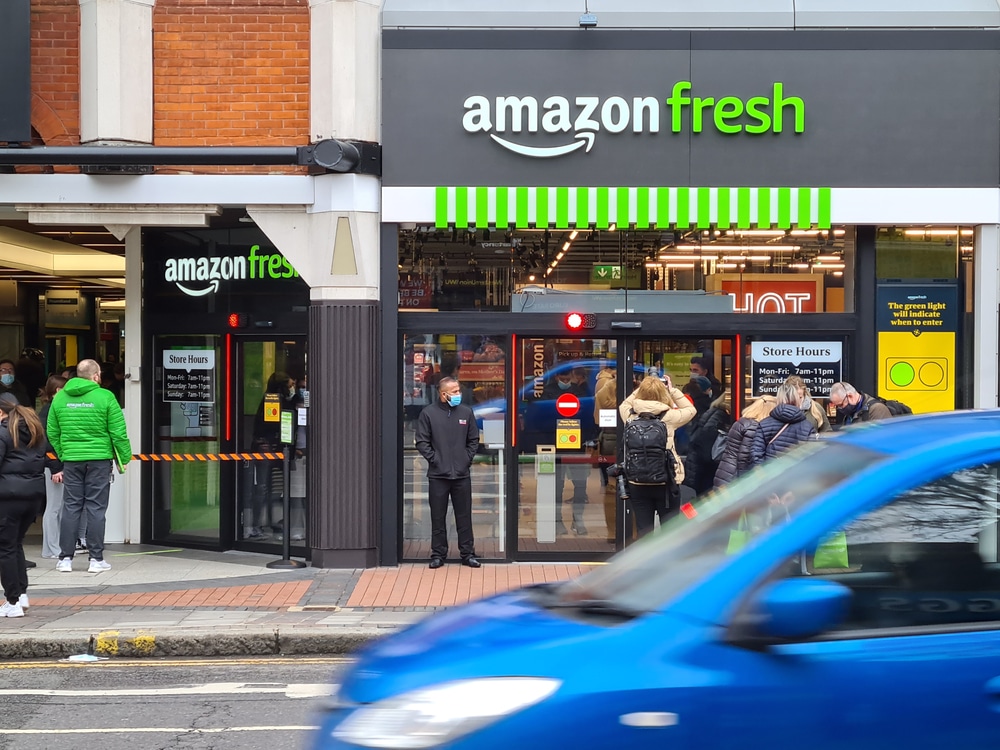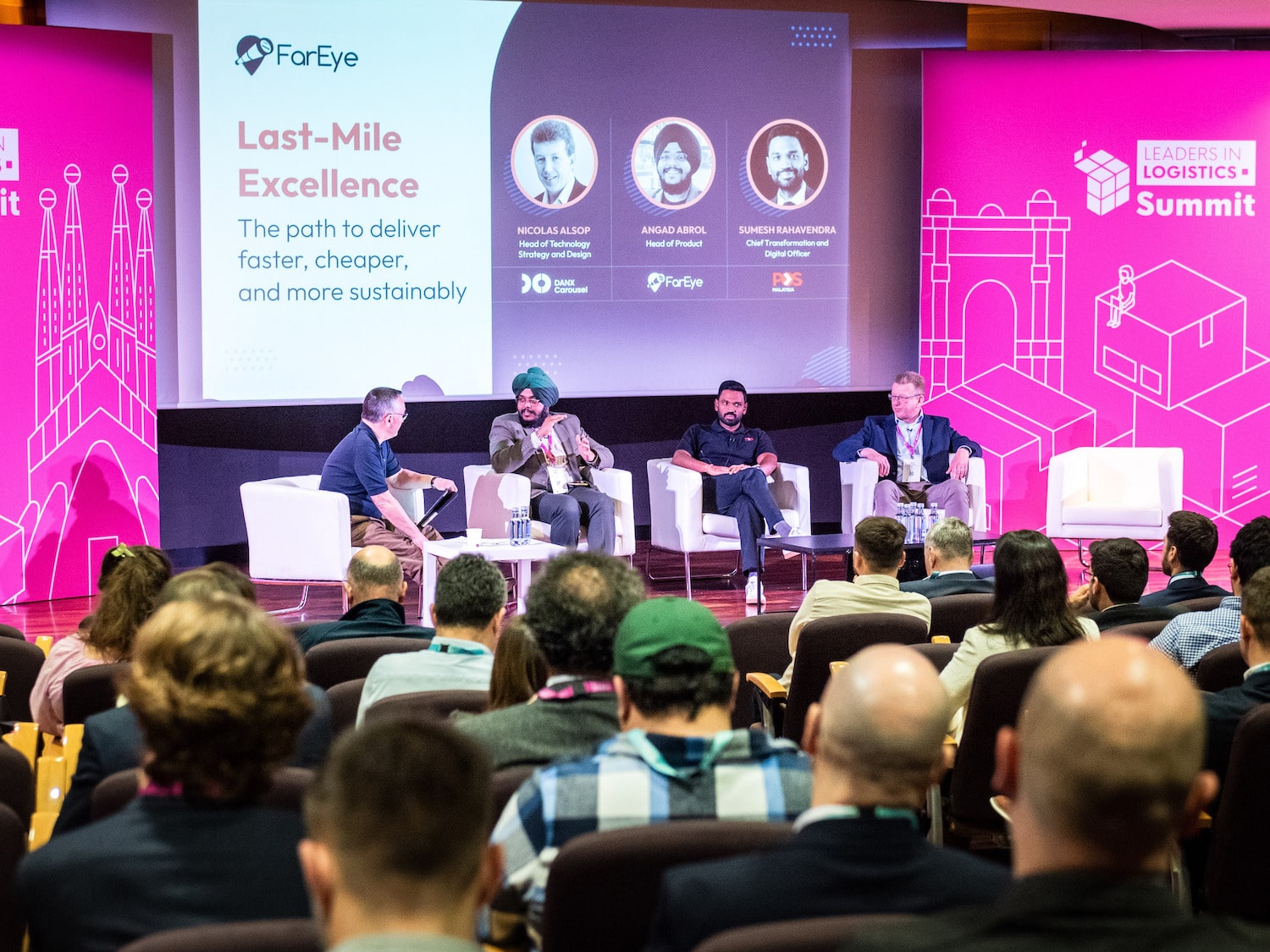Insight / Blog
Why Amazon’s move into UK grocery should be another wake-up call for parcel carriers

Amazon’s dominance of online retail has only accelerated throughout the pandemic, but the UK grocery market still feels like an ambitious target to crack into. Yet that’s exactly what Amazon plans to do, per an internal document leaked by Business Insider. Aiming to roll out cashierless Amazon Fresh grocery stores across the country at a rate rivalling major convenience players, Amazon is setting its sights firmly on a hyper-competitive, old-school, physical-first industry.
If that sounds familiar, that might be because this also describes Amazon’s aggressive approach in the parcel delivery space, channelling massive volumes (of their own parcels) through Amazon Logistics, which has come from nowhere to become a major force in UK parcel delivery in the last 5 years. Across the pond, the same phenomenon has occurred, with Amazon set to be America’s largest parcel delivery business in early 2022.
So what is it that makes Amazon think it can enter these industries where it starts with almost no presence? Why does it seem able to succeed, and what should its current and future competition learn from this approach? Let’s take a look at grocery.
The Plan
The leaked document states: “In 2022, we assume a broader rollout of 2 store launches per week by the end of the year, targeting 60 total openings. In 2023 and 2024, we are planning 100 store launches per year, in line with the more aggressive opening programmes achieved by convenience grocers in the UK in the last five years (Tesco, Sainsbury’s and Co-op have all exceeded 100 store openings in a year)”.
The Industry
Grocery retail in the UK is an intensely competitive market to enter, where very expensive decades-long battles are fought over small percentages of market share. The incumbent businesses here are massively experienced – the top 5 have an average age of just under a century.
Amazon is of course relatively young, having started in 1997, but is much younger again in terms of grocery operations. If we assume that experience is an advantage, as it seems it must be looking at the average age of the incumbents, it would appear insanely optimistic for a relative newborn to profitably scale in the way that it hopes to. The question is whether this is truly a disadvantage, or whether it is actually exactly what will allow Amazon to succeed.
The Difference
Amazon is coming into the UK grocery market with something different. It isn’t a century-old expert at grocery – it’s a machine for building successful businesses in all sorts of areas, starting with retail and expanding along the supply chain (warehousing and fulfilment, last-mile delivery) and outwards into new verticals (grocery, web hosting, advertising platforms). Mark Ritson reminds us of how Bezos explained his approach to a group of sceptical MBA students. Those students weren’t convinced that this new “Amazon.com” business could really open up retail in a big way by quickly establishing itself online.
“I think you might be underestimating the degree to which established brick-and-mortar business, or any company that might be used to doing things a certain way, will find it hard to be nimble or to focus attention on a new channel. I guess we’ll see.”
That ability to focus on a new channel, operate in a different way, and identify the right place to be operating differently at the right time, is what makes Amazon the competitive threat that it is. The entire organisation is set up to maximise customer data and understanding, then deliver the right experience for those customers, at any cost, until it starts to pay off. That’s a way of operating that legacy, heavily physical players usually can’t dream of.
In grocery, Amazon is making that happen with its “Just Walk Out” technology, eliminating the friction of queuing to pay – something no grocer in the UK was even attempting to create, and which Sainsbury’s (the UK’s second biggest grocer) is now licensing from Amazon for use in its own convenience stores.
To understand the power of ‘Just Walk Out’, you have to try it. Taking away the checkout doesn’t feel like it should really transform the shopping experience – you’re still walking round the shop, filling a basket, deciding what potatoes to buy, et cetera… but it truly does transform it. It must be something to do with the Peak-End Rule we’ve blogged about before, the fact that the last moment of a customer experience is often the defining characteristic of the whole experience and the thing you remember. Either way, walking out of the store without having gone through a checkout is an absolutely wonderful, transformative experience you do not forget. It’s akin to the feeling when you closed the door on an Uber for the first time and didn’t have to deal with paying a taxi driver. It feels like the game in physical grocery retail has changed and it won’t be long til you never go back to ‘the old way.’

From grocery to parcels
In parcels, Amazon is set to deliver more than anybody else in America next year, fighting off FedEx and UPS (which are 50- and 114-year-old businesses respectively.) But it hasn’t reached this stage by replicating every service that existing logistics providers are established in. Instead, it found an opening in digital solutions, and specialised in last mile deliveries from its own fulfilment centres.
Dean Maciuba of Last Mile Experts rightly notes that comparing Amazon to companies like FedEx or UPS is like comparing apples to oranges. “If you are confused, simply pick up the phone and try and get Amazon to pick up your package from your home or business, and deliver it to any US address.”
Therein lies the point. As in grocery, Amazon is choosing what to do based on value to the customer, and last mile is one of the most crucial factors in overall customer experience. Choosing to own that internally, and then offering it as a service to everyone else, makes Amazon a competitive threat to other last-mile delivery providers, which includes FedEx and UPS. No, it won’t be doing middle-mile line hauling for other businesses any time soon, but more and more often, the person at the doorstep handing over the parcel will be wearing that familiar a-to-z smile logo.
Amazon reverse engineered an entire delivery system based on customer needs, just as they’re reverse-engineering grocery stores from a huge stockpile of data and insight.
From partners to leaders
Amazon’s move into grocery has been coming for a long time.
First, it carried out strategic partnerships to gather data. For the UK grocery market, this came from a partnership with Morrisons where Amazon customers could shop from Morrison’s assortment on Amazon, which used its existing delivery infrastructure. Morrisons benefited from more sales from its stores, while Amazon captured huge amounts of data through its platform.
Then, much like the parcel delivery offering, the grocery store proposition is reverse engineered based on every grain of consumer understanding built up in those partnerships. Amazon is not remaining a total outsider though. To help guide the strategy, it has poached one of Tesco’s most senior executives to become the Senior Vice President of Amazon’s physical grocery stores.
Amazon’s grocery plan is built on the core principle of giving customers a quick, easy and contactless shopping experience. Knowing its digital capabilities are stronger than any other supermarket, it created the “Just Walk Out” model that no competitor could match, and in doing so opened up a number of new possibilities for how the store could become more efficient and effective without as much space and staff resource had to be dedicated to the checkout.
Digital-first thinking leads the way
That pattern of working, starting with the most value to the customer and building backwards, describes Amazon’s approach in every area. The biggest lesson for parcel carriers is how they do it, with a digital approach and a comprehensive set of technology brought to bear on the most valuable customer experiences, leading to a hugely effective physical operation.
For both carriers and grocers, the Amazon approach means that being excellent physical operators is no longer enough to be safe from disruption from the digitally nimble and the omnichannel experts. At Doddle, we’ve been working with carriers all over the globe to address the challenges they’re facing with digital solutions so that they can offer deeper value to consumers and retailers alike.
Discover how we created a future-proof out of home strategy for bpost here, or get in touch to see how we can help shape your transformation.
Topics:
Related articles
Return fees or free returns: why not both?
Debates between return fees or free returns miss the bigger picture: how to address the root issues of returns.
Important lessons from Leaders in Logistics 2024
Leaders in Logistics 24 dived into AI & automation, sustainability, changing ecommerce behaviours, emerging consumer expectations & predicted what the next decade had in store.
Postal results, reforms, and returns
Posts around the world are seeking reform, but how can they drive improved results in the short term?















